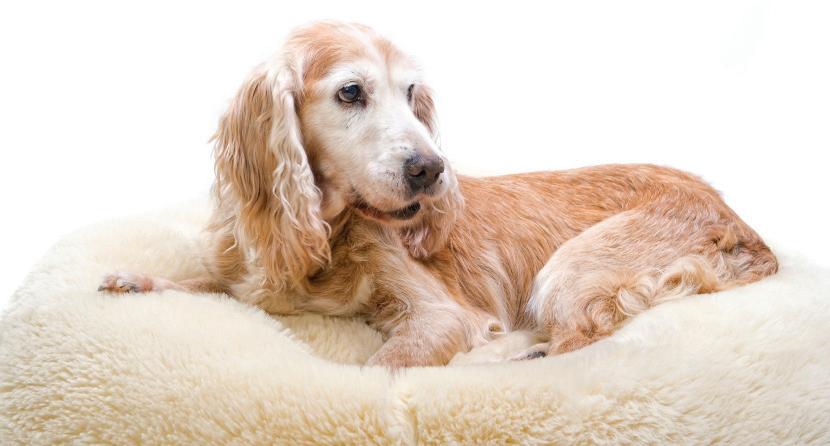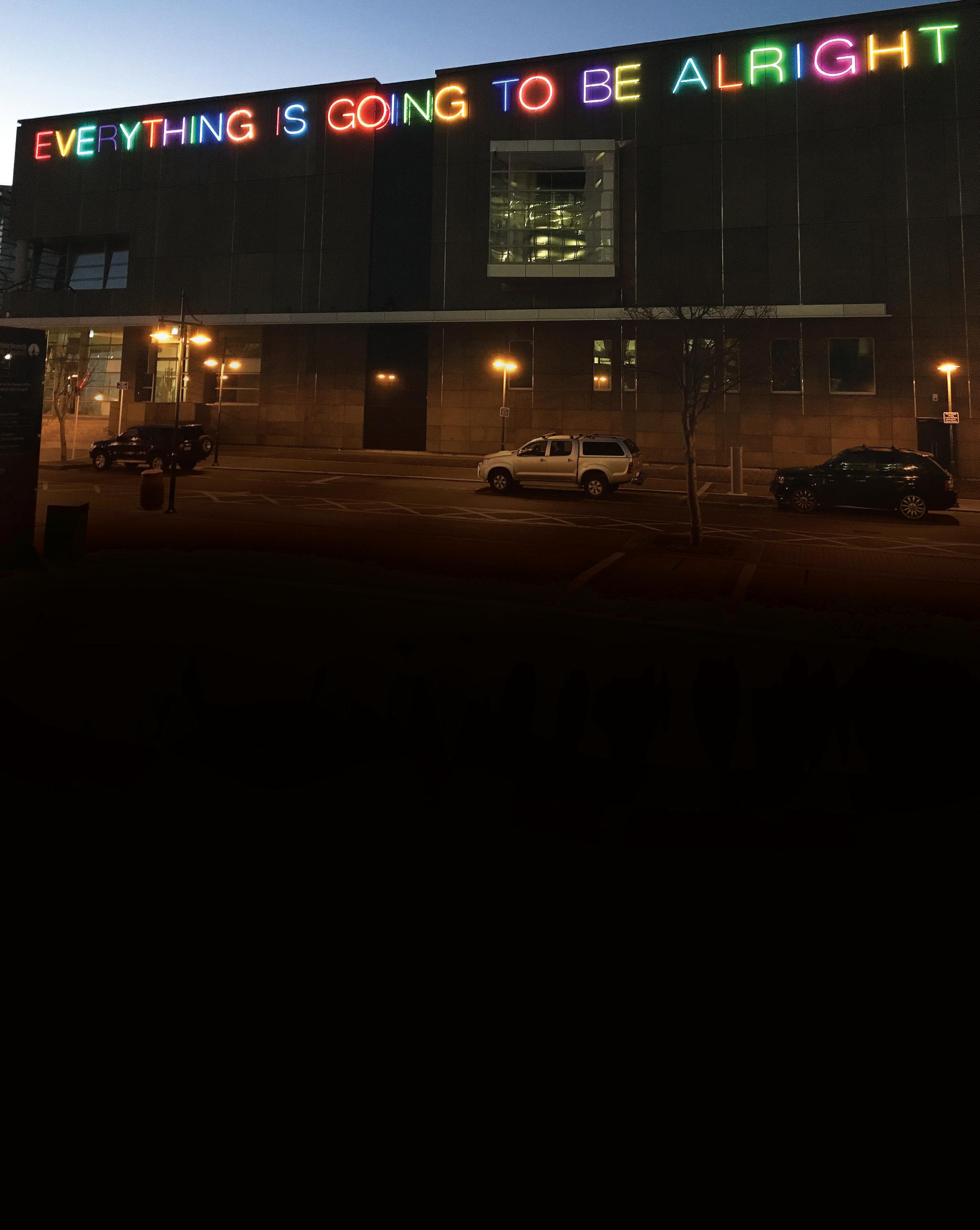
8 minute read
Lifestyle
What should I do if my pet has a lump?
Lumps and bumps are common in pets, particularly as they get older. Some lumps can be cancerous (malignant) and some harmless (benign) but it is not always possible to determine this by examination alone.
What testing is necessary if you find a lump on your pet?
If you find a lump, the sooner it is examined by a vet the better. It is not possible to be certain on examination alone whether a lump is cancerous, so your vet will usually want to run some tests.
Cytology
This is a non-invasive test method where cells from the lump are aspirated using a needle and syringe, placed onto a microscope slide and examined. Sometimes the diagnosis needs to be confirmed by a veterinary pathologist at an external laboratory. Generally the results will take 1-2 days.
Often your pet will not need sedation to have a sample taken and it can be done during a regular consultation. The limitations are that some lumps are too small to aspirate, sometimes insufficient cells are sampled and sometimes the results are inconclusive. It is frustrating for both vets and pet owners when a result is not diagnostic.
Generally if sufficient cellular material is aspirated, the accuracy is around 90% for cytology. Occasionally results can be misleading as the cells sampled may not be representative of the actual mass, so it is important to continue monitoring the lump and have it re-examined if there are changes.
PET DESIGN
Professional grooming for dogs and cats
DOG GROOMING:
All breeds of dogs are bathed and clipped to your specific requirements by our highly trained groomers.
CAT GROOMING:
Professionally groomed by appointment by Jenny Kent, with the owner staying with the cat and completed within 30 minutes with no sedation ever required. "Our goal is to develop a lifelong relationship with you and your pet by providing a friendly, professional and compassionate service. We value our clients, listen to them and we are always careful to address your pet’s individual needs."

WE HAVE THREE LOCATIONS: Lane Cove 9428 1333
Epping 9876 3336 Manly 9976 6744
FOR INFORMATION: www.groomer.com.au
Histopathology
Histopathology involves taking a tissue sample of the lump by either removing a piece of tissue (incisional or punch biopsy), or surgically excising the whole lump (excisional biopsy), and sending it to an external laboratory for analysis. Results take approximately 5-7 days.
Usually a general anaesthetic is required, though sometimes sedation and local anaesthesia is sufficient.
An excisional biopsy is carried out in areas where a margin of healthy tissue surrounding the lump can be easily removed, to minimise the chance of cancerous cells being left behind.
If the lump is located in a difficult area such as a toe, where there is very little skin, a punch biopsy is preferred. If a toe tumour biopsy result shows that the mass is particularly aggressive, then it may be preferable to amputate the toe to ensure the entire cancer is removed.
An advantage of histopathology is that some tumours can be graded to further determine the likely prognosis and best course of action after surgery. For example, most cell tumours of the skin have three grades, all of which carry a different prognosis. The pathologist can also determine whether the margins are clear of any cancerous cells or if further surgery is required.
Do you need histopathology on a lump if it is surgically removed?
If a lump is surgically removed, histopathology is worthwhile as some lumps are locally aggressive and others spread internally. In most cases it is not possible to determine what the behaviour of the tumour is by examining it with the naked eye. Knowing what type of lump it is can give peace of mind if it is benign, or allow further tests to be done if it has spread.
Histopathology may not be required if it is a foreign body reaction lump, an abscess, or a lipoma (benign fatty lump which can be confirmed with cytology), but this is up to your veterinarian.
What tests can be done if the lump is malignant?
If your pet has a malignant lump, histopathology will show what type of cancer is present and the behaviour of the tumour. Sometimes surgery is curative and no further testing is required. In these cases, if the margins are clear of any cancerous cells, monitoring the surgical site may be all that is necessary.
If the cancer has a high risk of spreading to lymph nodes, abdominal organs and/or chest, then aspirating any enlarged local lymph nodes, chest radiographs and an abdominal ultrasound will show if there is any evidence of metastases. This is known as cancer staging.
Immunohistochemical staining may be an option for some tumour types with varying behaviours depending on certain mutations that may be present. This gives further information about the expected prognosis to decide treatment recommendations.
A consultation with a specialist veterinary oncologist may also be recommended.
Dr Gretta Howard. Veterinarian Twitter: @ DrGrettaVet

When things go awry
MARK TWAIN
The world seems to have gone crazy all of a sudden. Sad and dreadful events perpetuate our news broadcasts such that even normally resilient people are starting to question when things might improve.
The positivity of those times when we were buoyed by the largely peaceful transition from apartheid to democracy in South Africa, when the wall came down overnight in Berlin to unite those separated for too long, when Presidents Gorbachev and Reagan signed off on nuclear disarmament, now seem so distant.
Instead this century has seemingly been wracked by disaster. Natural disasters, such as the massive bushfires we’ve experienced in Australia and are now seeing in Portugal; avalanches on Mount Everest; earthquakes in China, Chile, Indonesia, Japan and New Zealand; and the 2004 tsunami.
As if this weren’t enough, man’s inhumanity to man has reached an all-time low. Where we used to worry only about random bombs, now we must also contend with maniacs driving cars and trucks into people. Vehicles have become more effective than knives and guns. And those warnings about exercising caution when in crowds make us ever more vigilant, and often very insecure.
The effect is always particularly noticeable within the travel industry. One study recently noted that bookings to France were down 17% in the few months following the Nice truck murders. Another client cancelled a cruise which featured one day only in Bali because of heightened warnings. Andrea in our Northwood office spent a lot of time costing alternatives to Qatar Airways and I am holding my breath on another Middle Eastern issue, hopeful that we will not see a laptop ban such as that initiated between the Middle East and the USA or the UK. Despite all of this, a very recent poll indicated that Australians still remain optimistic.
And that is good because we cannot, nor should not, stop travelling. To hibernate, to stay home worried that we will be caught up in the next incident, is to give in. This is not selfserving. Yes, I do have a business to keep afloat but if we stop travelling, we stop learning to understand what makes others tick, to understand their world. And they don’t have a chance to learn similarly from us. While we can still travel, we should continue to do so. Interstate too, to discover how our larger Australian, notably indigenous, community lives.
I do think this is particularly important for children. We cannot imbue them with our fears and prejudices but must kindle their natural enthusiasm for exploration and learning. And we should not shy away from visiting places scarred by disaster for we also need to understand how quickly our world can change – and how the human spirit can work to overcome those difficulties.
A case in point is Christchurch, which is still a disaster in the minds of many and so they avoid or abbreviate any visit. In Christchurch, the need to build afresh, to recreate some certainty and security, is indomitable. Beautiful new buildings are springing up everywhere in the city centre while in the suburbs, acres and acres of land that once housed my family, among hundreds of others, is now parkland with the only remaining sign of previous habitation being vague boundary borders of trees and shrubs.
Art and drama are flourishing once more. Exciting bars and restaurants sate peoples’ needs to socialise over food and wine. International rugby matches have returned and the local team tops the leader board of the Super 18. Yes, many are still broken but the wounds are healing.
The healing is helped when the burden is shared. So too will it be in London. So too it is happening in Nice. So too it has happened in Bali where many positive projects were born out of the tsunami. So too it has happened in Sri Lanka which is now on the bucket list after years of civil unrest.
While I urge you to continue to travel, do take note of DFAT advices and consider registering your travel plans. The chance that you will be caught up or caught out is really slight, but Australians can rely on first world government assistance in times of crisis. Communicate your safe status and whereabouts quickly to family at home to provide everyone with comfort. Travel wisely. Travel safely. Ensure you travel with insurance.
Our world is still a wonderful place to explore. Go live the dream!
TRAVEL Adrienne Witteman, Managing Director, Trendsetter Travel & Cruise Centre.








